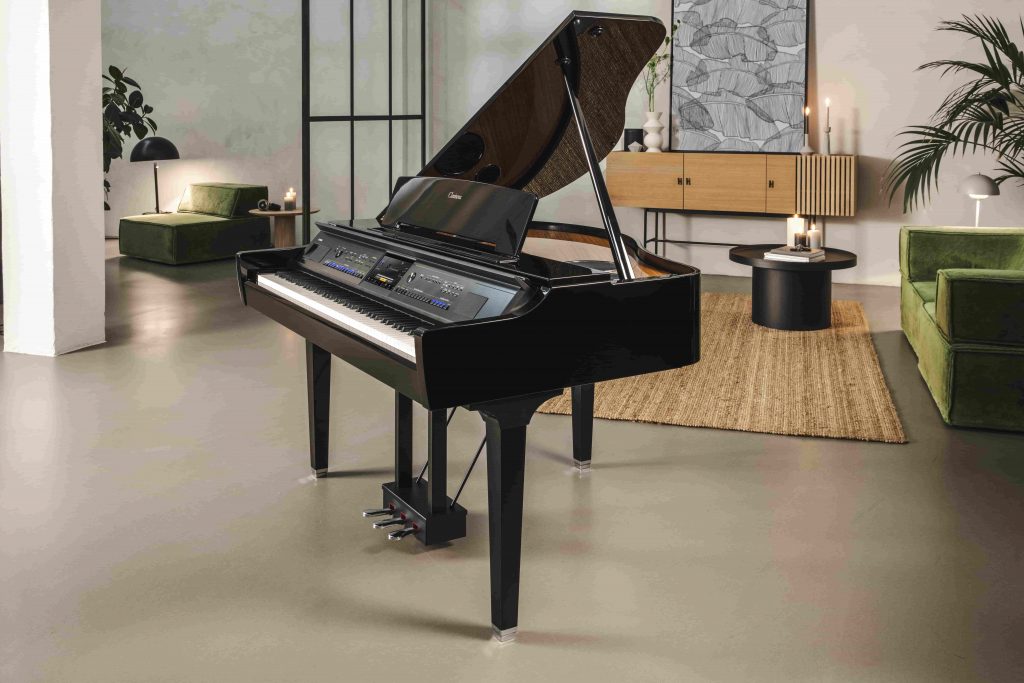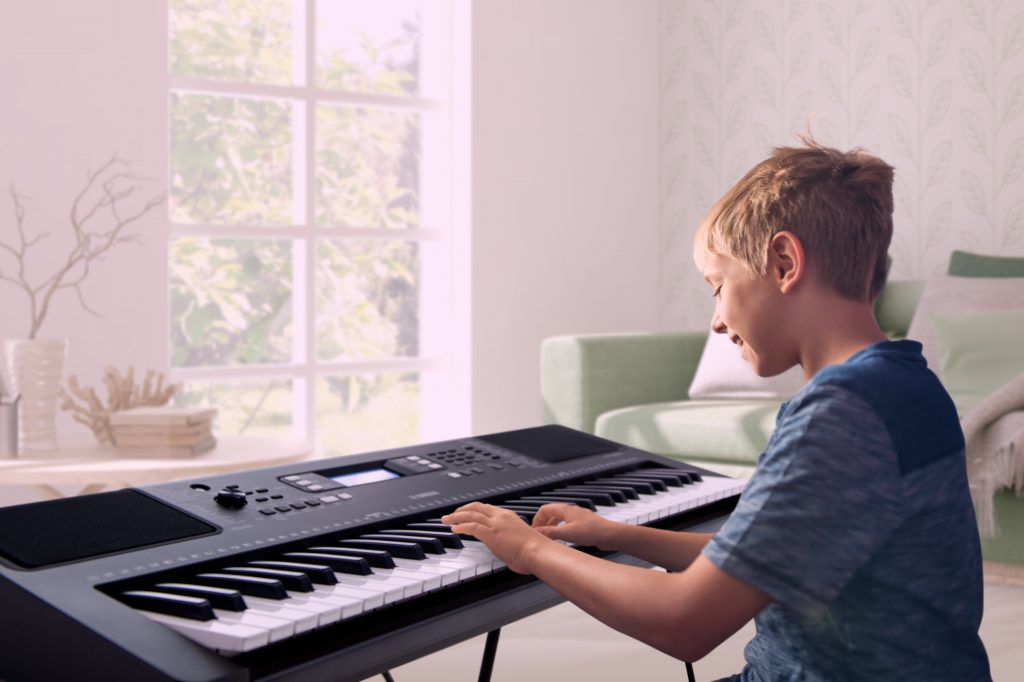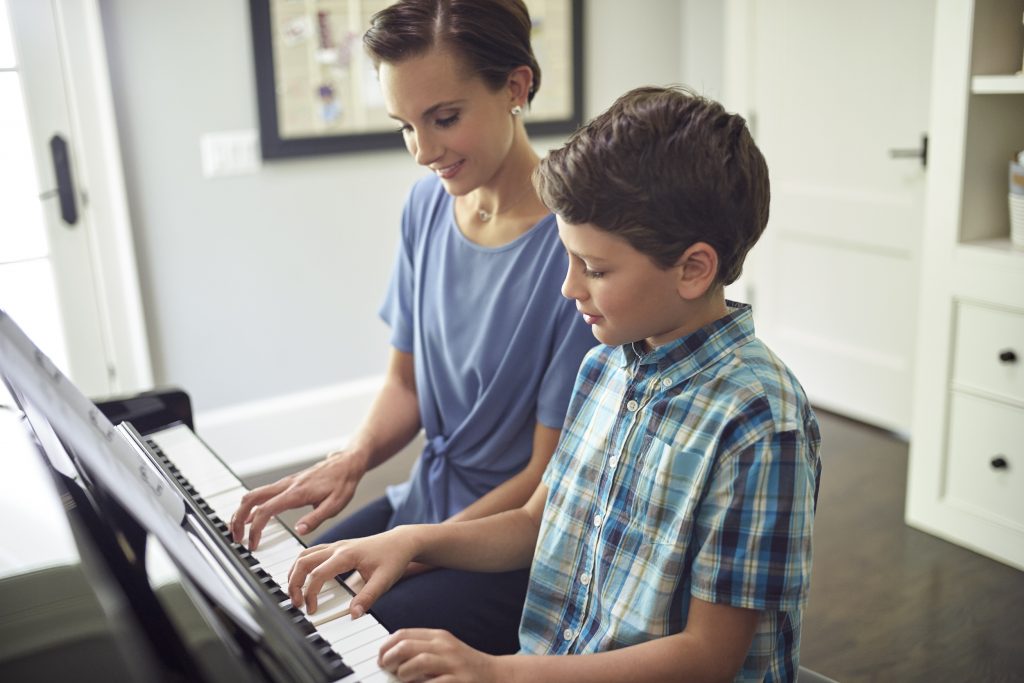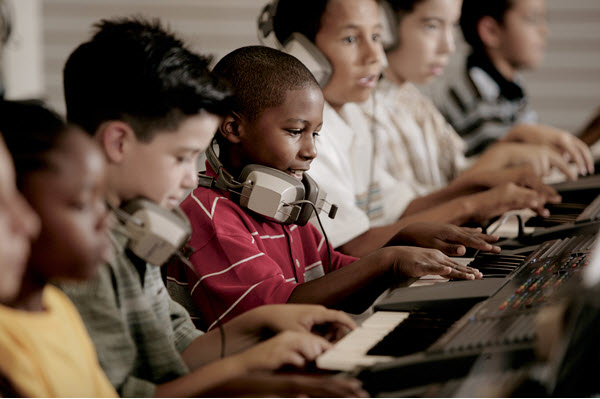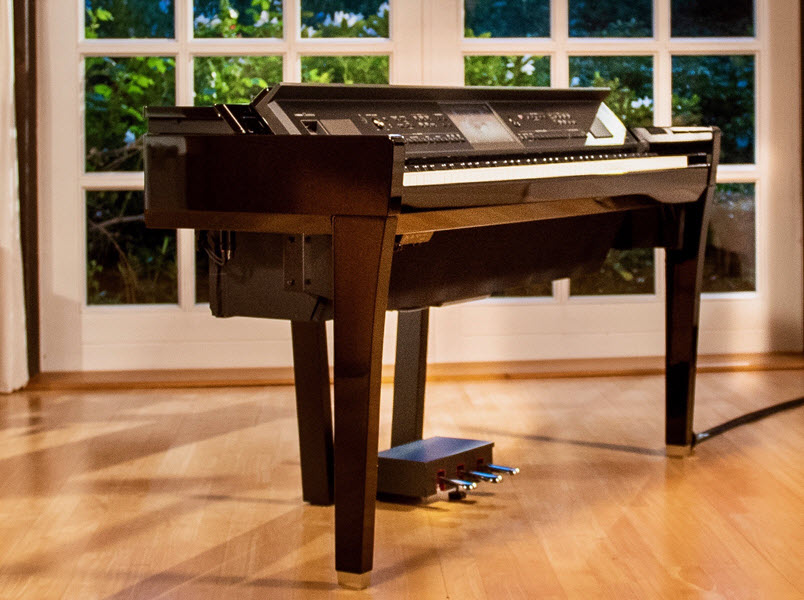A Quick Guide to Weighted Keys
What are they, and why do you need them?
You’re about to buy a digital keyboard instrument. One of the many questions you need to ask yourself is: Do I need one with weighted keys?
The answer mostly comes down to whether or not your ultimate goal is to play piano. (If you’re already a pianist, you’ll definitely want an instrument with weighted keys, for reasons we’ll explain shortly.)
In this article, we’ll take a look at the benefits offered by weighted keys, and will discuss the various systems in common use today. Ready to learn more? Read on …
What Are Weighted Keys?
As the name implies, these are keys to which weights have been added so as to simulate the complex mechanics that occurs when a key is depressed in an acoustic piano — a series of levers that eventually cause a hammer to strike a grouping of two or three strings. This system has a natural weight or resistance that you can feel as you play a piano, and it’s that resistance that helps you gauge how hard to hit a key to get the sound you want. Use a delicate touch and the note will be soft and less strident; strike with greater force and the extra pressure will cause the hammer to hit the strings harder, resulting in a louder, brighter sound.
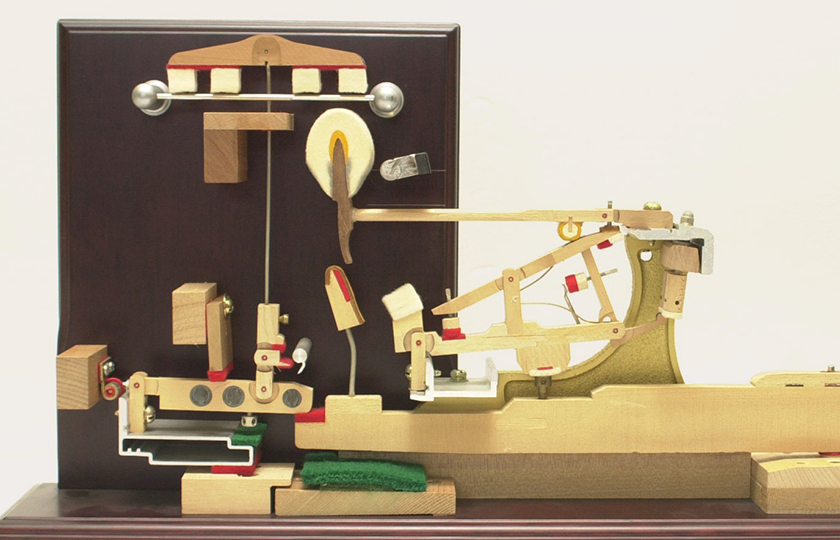
Unweighted keys (which are usually spring-loaded) are most often found in synthesizers and entry-level digital keyboards. Digital pianos, including some portable models as well as most “stage” models (keyboards designed for live performance), will typically have weighted keys. Yamaha Portable digital pianos, as well as our two Stage Pianos (the CP73 and CP88) combine portability with weighted keyboards. Yamaha ARIUS digital pianos all have weighted keys and built-in consoles. And the entire premium Clavinova digital piano line provides fully authentic touch thanks to cutting-edge technology such as weighted “Grand Touch™” keyboards that feature real hammers and graded action (see below for more information).
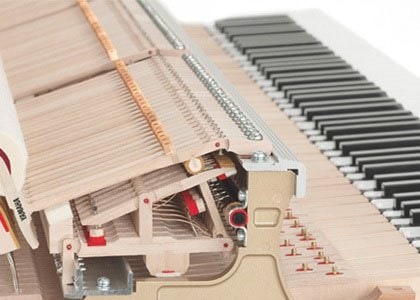
Go Where the Action Is
The “feel” of an acoustic piano is most often described as its “action.” This can be adjusted by a skilled technician so that the pianist encounters greater or lesser resistance as notes are played. The difference in action is one of the main reasons why playing a grand piano feels very different than playing an upright model. Because the strings are mounted horizontally in grand pianos, the hammers return to their rest position due to the force of gravity, under their own weight. In addition, grand pianos utilize a double escapement mechanism that allows keys to be played rapidly in succession, without first letting the key return all the way to its starting position. In upright pianos, where the strings are mounted vertically, the hammers rely on springs to return to the at-rest position. As a result, key repetition (i.e., when a player repeats notes quickly, such as when playing trills) is much smoother and faster in grand pianos than it is in upright pianos — to a maximum of roughly 15 times per second in grands, versus seven times per second in uprights.
Unlike acoustic pianos, the sounds made by digital keyboards do not come from the vibrations of strings. Instead, the sounds are generated from streams of numbers — numeric emulations (“samples”) of acoustic pianos and other instruments. The weighted keys in digital keyboards often incorporate physical counterweights and/or hammers to evoke the sensation of playing an acoustic piano, and the feel of these instruments is also referred to as their action.
Let’s take a look at the three weighted actions most commonly used in digital keyboards.
1. Semi-Weighted
As mentioned previously, most entry-level digital keyboards and synthesizers have unweighted keys. However, some intermediate models offer a semi-weighted action. These instruments incorporate spring-action keys with more resistance than those found in an unweighted keyboard, providing a playing experience which is more responsive to your touch.
2. Hammer Action
Digital instruments with a hammer action keyboard include a mechanism that replicates that of an acoustic piano. This is usually achieved by the attachment of a physical lever system and hammers to add more resistance to the keys you’re playing.
3. Graded Weighting
Every single key on a grand piano keyboard is weighted differently. This is because the strings for each note are slightly thinner and shorter in the treble register, becoming thicker and longer towards the bass register. As a result, there is greater resistance when playing low notes than when playing high notes. In other words, a heavier touch is required in the left hand and a lighter touch in the right hand. To emulate this in a digital piano, the keys are often individually weighted, with the lower keys heavier than the higher ones — something that’s called graded weighting.
Yamaha Weighted Key Designs
Yamaha has been building acoustic pianos for more than a century. This long experience has allowed us to develop a number of innovative keyboard actions for our digital instruments. These include:
Graded Hammer Standard (GHS)
Graded Hammer Standard (GHS) action incorporates real hammers and is found on many Yamaha digital pianos, including YDP Series and Portable P-Series and DGX-Series models. Instruments with GHS actions are ideal for beginners that want to start getting used to the feel of an acoustic piano. They deliver the graded, weighted touch piano teachers recommend for building proper technique.
Graded Hammer 3 (GH3) and Graded Hammer 3 With Escapement (GH3X)
Utilizing the same hammering system and spring-less mechanism as a concert grand piano, GH3 and GH3X actions accurately reproduce the touch of an acoustic piano, from the heavy feel in the lower register to the lighter touch in the upper octaves. It also allows the player to feel the weight of a key when depressing it a second time, even when the key has not yet been completely released.
In addition, the GH3X action incorporates an escapement mechanism. In a grand piano, this moves the hammers away from the strings quickly after they are struck in order to prevent any interference with string vibration; it also produces a slight clicking sensation when the keys are pressed gently. The GH3X mechanism reproduces this sensation near the bottom of the key dip. It has been designed in such a way that the click is discernible only on the lightest keystrokes, similar to the keyboard of a grand piano. This keyboard action has also been adjusted to provide additional friction that balances key repetition and response without impeding performance.
You’ll find GH3 and GH3X actions on Yamaha Clavinova CSP-150 and CVP-701 digital pianos, as well as the ARIUS YDP-164 and YDP-S54 models.

Grand Touch Keyboards
The Grand Touch keyboards offered by all Yamaha Clavinova CLP Series and select CVP Series models provide a detailed grand piano feel that allows for uniform tone control, precise rhythm and smooth melodic expression.
An important part of this is the use of differing weights and key returns for each one of its keys, similar to that of an acoustic grand piano. Grand Touch keyboards also provide an escapement mechanism, similar to that employed by GH3 and GH3X keyboards, along with extended key length, which gives the player extra leverage for better expressive control, even when playing at the backs of keys.

The Benefits of Weighted Keys
In order to develop proper piano technique, players need to feel that they are pushing against a key to play a note, and they also need to experience the sensation of the key pushing back up when returning to its resting position. In a digital instrument, this can only be accomplished with the use of weighted keys.
Weighted keys also encourage finger strength, just as lifting weights in a gym encourages arm, back and leg strength. The principle is the same: The more you lift a heavier weight, the easier it is to lift lighter weights.
Non-weighted keyboards can be fine for the casual player, or for someone who only ever intends to play organ or synthesizer. But if you learn or practice exclusively on non-weighted keyboards, you will likely find it difficult to make the transition to acoustic piano. So if your ultimate goal is to play piano, weighted keys are really the only way to go.
Check out these related blog articles:
What’s the Difference Between a Grand Piano and an Upright Piano?
What’s the Difference Between a Digital Keyboard and a Digital Piano?
Buying Your First Digital Keyboard
Which Digital Piano Is Right for Me?
Step Up to a Better Keyboard, Part 1: Feel and Sound
The Rebirth of the Stage Piano
Click here for more information about Yamaha digital pianos.
Click here for more information about Yamaha stage keyboards.











